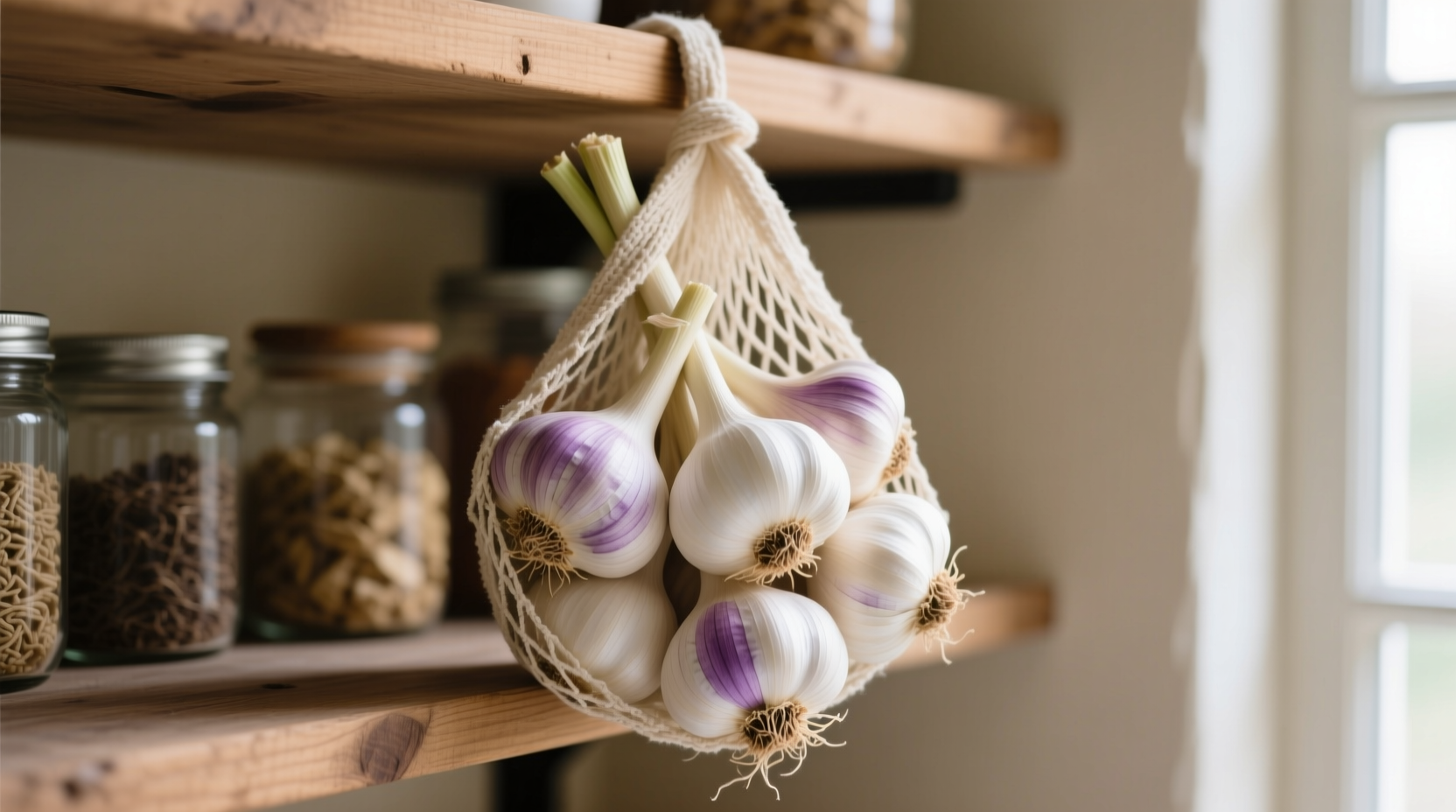Discover exactly how to store garlic properly to prevent sprouting, mold, and flavor loss. This guide reveals scientifically-backed storage methods tested by food preservation experts, helping you extend your garlic's shelf life while preserving its potent flavor and health benefits. Whether you've got a farmer's market haul or just want to maximize grocery store bulbs, these practical techniques work for every kitchen.
Why Proper Garlic Storage Matters
Garlic spoils quickly when stored incorrectly, leading to wasted food and diminished flavor in your cooking. According to USDA food safety guidelines, improper storage causes garlic to sprout, develop mold, or become soft within weeks. The key to longevity lies in understanding garlic's natural dormancy cycle and creating conditions that maintain this state. When stored properly, whole garlic bulbs retain their allicin content—the compound responsible for both health benefits and pungent flavor—up to six months longer than improperly stored bulbs.
The Science Behind Garlic Preservation
Garlic bulbs contain moisture-sensitive compounds that trigger enzymatic reactions when exposed to improper conditions. Research published in the Journal of Agricultural and Food Chemistry shows that temperatures above 70°F (21°C) accelerate sprouting, while humidity above 70% promotes mold growth. The ideal storage environment maintains garlic's natural dormancy by providing:
- Cool temperatures (60-65°F/15-18°C)
- Low humidity (60-70%)
- Complete darkness
- Air circulation to prevent moisture buildup
Unlike many vegetables, garlic requires dry conditions—refrigeration actually increases moisture exposure, triggering premature sprouting. The National Center for Home Food Preservation confirms that pantry storage outperforms refrigeration for whole garlic bulbs by maintaining optimal dormancy conditions.
Comparing Garlic Storage Methods
| Storage Method | Shelf Life | Flavor Preservation | Best For |
|---|---|---|---|
| Pantry (mesh bag) | 3-6 months | Excellent | Whole bulbs |
| Refrigerator (unpeeled) | 1-2 months | Good | Individual cloves |
| Freezer (whole) | 10-12 months | Very Good | Long-term storage |
| Oil preservation | 1 week | Fair | Immediate use (with safety precautions) |
Step-by-Step Pantry Storage Guide
Follow these professional-tested steps for maximum garlic freshness:
- Select appropriate containers: Use mesh bags, wire baskets, or paper bags—never plastic which traps moisture. The University of California Cooperative Extension recommends breathable containers that allow air movement around each bulb.
- Prepare your storage location: Find a cool, dark spot away from heat sources (stove, dishwasher, sunlight). Ideal pantry temperature ranges between 60-65°F (15-18°C).
- Check bulbs regularly: Every two weeks, inspect for soft spots, mold, or sprouting. Remove any compromised bulbs immediately to prevent spoilage spread.
- Handle with care: Avoid washing garlic before storage—moisture accelerates decay. If dirty, gently brush off soil with a dry cloth.
Special Cases: Storing Different Garlic Forms
Each garlic preparation requires specific storage approaches:
- Whole bulbs: Keep intact with papery skin. Never remove outer layers until ready to use.
- Individual cloves (unpeeled): Store in a small mesh bag in your pantry for 2-3 weeks.
- Peeled cloves: Place in an airtight container in the refrigerator for up to one week.
- Minced/chopped garlic: Store in olive oil in the refrigerator for 3-4 days (discard if cloudy appearance develops).
- Roasted garlic: Refrigerate in a covered container for up to one week or freeze for longer storage.

Critical Mistakes That Ruin Garlic Freshness
Avoid these common errors that dramatically reduce garlic's shelf life:
- Refrigerating whole bulbs: The USDA FoodKeeper app specifically warns against refrigerating unpeeled garlic bulbs, as cold moisture triggers sprouting.
- Using sealed containers: Plastic bags or airtight containers trap humidity, creating mold-friendly environments.
- Storing near potatoes: Both release moisture and ethylene gas that accelerates spoilage in each other.
- Washing before storage: Residual moisture promotes bacterial growth—clean only immediately before use.
Realistic Garlic Shelf Life Timelines
Understanding actual longevity helps prevent food waste. Based on National Center for Home Food Preservation data:
- Whole bulbs in optimal pantry conditions: 3-6 months
- Individual unpeeled cloves: 2-3 weeks
- Peeled cloves in refrigerator: 7-10 days
- Minced garlic in oil (refrigerated): 3-4 days
- Whole bulbs frozen: 10-12 months
- Roasted garlic (refrigerated): 5-7 days
When garlic begins sprouting, don't discard it immediately—the green shoots are edible and indicate the bulb is still safe to use, though flavor may be slightly milder. Simply remove the green sprout before using.
When Refrigeration Makes Sense
While whole bulbs shouldn't be refrigerated, certain situations warrant cold storage:
- Individual peeled cloves needing short-term storage
- Minced or chopped garlic you'll use within days
- Garlic in humid climates where pantry temperatures exceed 70°F (21°C)
When refrigerating, always use airtight containers to prevent garlic from absorbing refrigerator odors. The FoodSafety.gov guidelines emphasize that refrigerated garlic should never be stored in oil at room temperature due to botulism risk.











 浙公网安备
33010002000092号
浙公网安备
33010002000092号 浙B2-20120091-4
浙B2-20120091-4